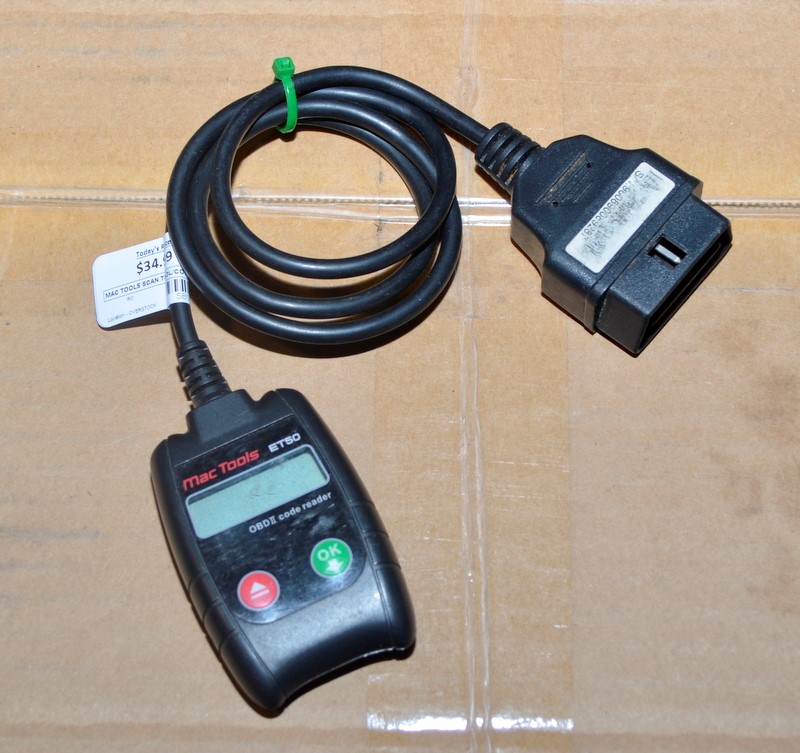Automotive Scan Tool For Mac
Discover Matco Tools' automotive tools and equipment that will suit any automotive repair or diagnostic need, including air ratchets, scan tools and engine repair tools. Get car diagnostic tools, automotive scan tools and diagnostic software from Snap-on Diagnostics. Connect with Snap-on support to learn how you can make the most out of your car diagnostic tools and automotive obd software. Find Mac Scan Tool On Sale Now. Looking for Mac Scan Tool today? Find Mac Scan Tool and other automotive parts and accessories for sale on Ebay.com today.
- Automotive Scan Tool For Laptop
- Best Professional Automotive Diagnostic Scanner
- Automotive Scan Tool For Mac Free
Automotive Scan Tool For Laptop
We spent 43 hours on research, videography, and editing, to review the top choices for this wiki. Back in the day, a good mechanic could tell you what was wrong with your car by simply listening to the engine. Not any more. Today's vehicles contain sophisticated electronics that require onboard diagnostics to figure out. Code program for mac. At least with one of these OBD2 scanners you'll know what's wrong before taking it to the shop or having a shot at fixing it yourself. When users buy our independently chosen editorial picks, we may earn commissions to support our work.

Best Professional Automotive Diagnostic Scanner
We spent 43 hours on research, videography, and editing, to review the top choices for this wiki. Back in the day, a good mechanic could tell you what was wrong with your car by simply listening to the engine. Not any more. Today's vehicles contain sophisticated electronics that require onboard diagnostics to figure out. At least with one of these OBD2 scanners you'll know what's wrong before taking it to the shop or having a shot at fixing it yourself. When users buy our independently chosen editorial picks, we may earn commissions to support our work.
On-board diagnostics (OBD) is a system that relies on sensors and computers in your car to display vital information about how your car is operating. In its earliest days, OBD took the form of cooling system gauges, tachometers, oil pressure gauges, and fuel level indicators to give us basic information about a car's condition. Nowadays, OBD systems can tell you about everything from crankshaft and camshaft position to manifold pressure to ignition misfires. Computerized OBD systems started coming online with Volkswagen's fuel injected models as early as 1969. These early versions were very basic and would illuminate a malfunction indicator if there was a problem, but they didn't provide any useful diagnostic information about the actual nature of the problem.
Later on in the early 1980s, General Motors began to implement a computerized (ALDL), which was actually capable of reading out error codes. New OBD2 systems and scanners use a digital communication port that relies a series diagnostic trouble codes, which identify the problem so it can be found and fixed quickly. In 1991, the California Air Resources Board (CARB) instituted new regulations that required every new automobile to have an OBD1 system. These initial systems weren't standardized and each car manufacturer used its own connectors and data link protocol. In 1994, the (SAE) recommended a standardized connector and data link protocol for all OBD systems and this became what is now known as OBD2. At the same time, CARB required that any car manufactured from 1996 and onward have the standardized OBD2 system installed and the U.S. Government followed suit with nationwide regulations.
Automotive Scan Tool For Mac Free
The European Union instituted OBD2 regulations in October of 1998. How To Use An OBD2 Scanner Using an OBD2 scanner is actually quite simple and it doesn't require any mechanical knowledge.
That's because OBD2 scanners don't fix problems, they identify them so that you, or a mechanic, can fix them without having to waste time trying to figure out what is wrong. OBD2 scanners are simply a diagnostic tool. Think of it like a doctor's visit for your car.
That's because OBD2 scanners don't fix problems, they identify them so that you, or a mechanic, can fix them without having to waste time trying to figure out what is wrong. The first step in using an OBD2 scanner is to find your vehicle's diagnostic or (DLC). It is a somewhat triangular 16-pin connector that looks similar to old computer monitor and printer ports. It is most often located underneath the left hand side of the dashboard near the steering column. Once found, you insert the OBD2 scanner connector, this can either be a cable attached to the scanner or a separate device that wirelessly sends the information, so it can initiate communications with your on-board computers.
You will then see some kind of message like 'establishing data link' or 'searching for protocol.' If your screen does not light up with some kind of message, you device has not made a connection and you should try jiggling the connector or unplugging it and plugging it back in. Next, you will have to enter your vehicle's information, which may include the make and model, VIN number, and engine type. Each scanner will require different information depending on the device model and manufacturer. After you scanner has made a connection, you've entered your vehicle information, and it has booted up, you can then start searching for trouble codes. Adobe systems for mac. Directv player 13 for mac.